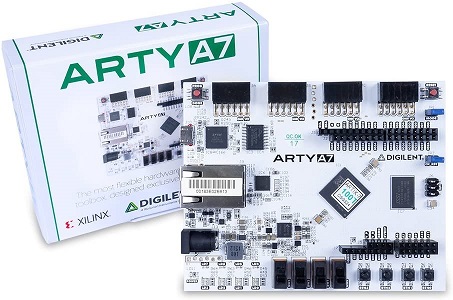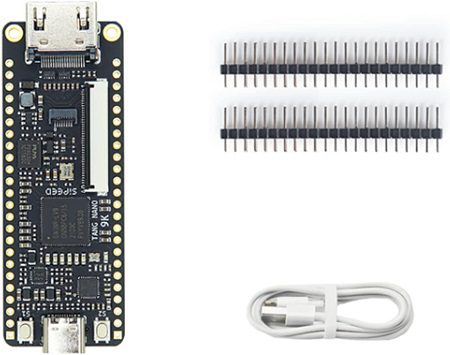Whether you’re a student delving into digital design, a hobbyist exploring new projects, or a professional developing cutting-edge technology, selecting the right FPGA board is crucial. Top FPGA development boards offer designers robust platforms for experimentation, learning, and product development, empowering them to harness their capabilities effectively.
Here are three key Features to consider:
- FPGA Chipset: Consider the FPGA chipset’s capacity and capabilities, such as logic elements, memory blocks, and processing power, to ensure compatibility with your project requirements and scalability for future endeavors.
- I/O Connectivity: Evaluate the board’s input/output (I/O) connectivity options, including GPIO pins, USB ports, Ethernet interfaces, and expansion slots, to facilitate seamless integration with peripherals and external devices.
- Installed Memory: Installed memory refers to the storage capacity available on the FPGA development board. It includes both volatile (RAM) and non-volatile (ROM) memory. Sufficient memory capacity is essential for storing configurations, data, and temporary variables in FPGA projects, enabling the execution of complex algorithms and applications.
Explore our comprehensive Buying Guide and top product recommendations for FPGA development boards.
Outline
ToggleBest FPGA Development Boards for Beginners
| FPGA Development Boards for Beginners | FPGA Used | Buy Now |
|---|---|---|
| Terasic FPGA Development Board | 10M50DAF484C7G | Check On Amazon |
| Digilent Arty A7 FPGA Development Board | XC7A100TCSG324-1 | Check On Amazon |
| MiiElAOD FPGA Development Board | GW1NR-9 | Check On Amazon |
| Digilent S7 FPGA Development Board | XC7S50-CSGA324. | Check On Amazon |
| RHS Artix-7 FPGA Development Board | XC7A200T-2FBG484E | Check On Amazon |
| Youyeetoo FPGA Development Board | GW2A-LV18PG256C8I7 | Check On Amazon |
Best FPGA Development Boards for Beginners Reviews
1. Terasic FPGA Development Board
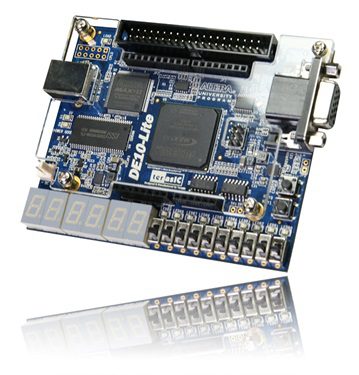
The Terasic DE10-Lite FPGA board offers a cost-effective solution based on Altera MAX 10 FPGA technology. Featuring around 50K logic elements and an on-die ADC, it serves as a robust option for various applications in industries like automotive and consumer electronics. This compact board includes built-in features such as an on-board USB-Blaster, SDRAM, accelerometer, VGA output, GPIO expansion connector, and Arduino UNO R3 expansion connector.
It is well-suited for system-level prototyping and comes equipped with reference designs and software utilities for convenient application development. The DE10-Lite kit enables users to implement circuits ranging from basic to multimedia projects, making it highly suitable for digital electronics courses. Additionally, its ample switches, LEDs, and support for Coursera courses enhance its versatility.
Specifications:
- MAX 10 10M50DAF484C7G FPGA
- 50K programmable logic elements
- 1,638 Kbit M9K Memory
- 64MB SDRAM, x16 bits data bus
- Accelerometer, 4-bit Resistor VGA
- 2×20 GPIO Connector, Arduino Uno R3 Connector
- 10 LEDs, 10 Slide Switches, 2 Push Buttons
- 5V DC input
Pros:
- Abundant switches and LEDs.
- Compact design with diverse connectors.
- On-board USB Blaster for easy programming.
- Ample memory and logic resources
Cons:
- Error codes during software installation.
- Limited live support for troubleshooting.
2. Digilent Arty A7 FPGA Development Board
Why it made the cut: Unbeatable price with Xilinx 7 series technology.
The Digilent Arty A7 FPGA Development Board is an option for creators and enthusiasts, presenting two FPGA versions the Arty A7-35T and Arty A7-100T. Utilizing Xilinx 7 series technology, it delivers internal clock speeds surpassing 450MHz and integrates an on-chip analog-to-digital converter (XADC).
Offering 256MB DDR3L, USB-JTAG programming, and various connectivity choices such as Ethernet and USB-UART bridge, it serves as an excellent foundation for a wide range of FPGA endeavors.
Specifications:
- Xilinx 7 series FPGA variants
- Internal clock speeds exceeding 450MHz
- 256MB DDR3L with 667MHz bus
- USB-JTAG Programming circuitry
- 10/100 Mbps Ethernet
- 4 Switches, 4 Buttons, 4 LEDs
- 4 RGB LEDs
- 4 Pmod connectors
Pros:
- Arduino-compatible expansion socket.
- Versatile FPGA development platform.
- High clock speeds for performance-driven projects.
- Comprehensive connectivity options.
Cons:
- Limited troubleshooting resources for complex projects.
3. MiiElAOD FPGA Development Board
Why it made the cut: Entry-level RISC-V FPGA with rich features.
The MiiEIAOD Tang Nano 9K FPGA Development Board serves as an introductory option for those interested in RISC-V exploration. Equipped with the Gowin GW1NR-9 FPGA, this board boasts various features such as 8640 LUT4, 6480 Flip-Flops, and 17280 bits of Shadow SRAM.
It supports various display interfaces, is compatible with breadboards, and utilizes the Gowin IDE for development, making it a flexible and economical choice for FPGA enthusiasts.
Specifications:
- Gowin GW1NR-9 FPGA
- 8640 LUT4, 6480 Flip-Flops
- 17280 bits Shadow SRAMSSRAM
- 468K Block SRAM
- High-Performance DSP
- Suitable for educational and prototyping purposes.
- Arduino-compatible Bread Board
- Development Environment: Gowin IDE
Pros:
- Entry-level FPGA kit for RISC-V.
- Rich internal resources and capabilities.
- Multiple display interfaces support
- Compatible with Arduino and breadboards.
Cons:
- Occasional issues with dead units.
4. Digilent S7 FPGA Development Board
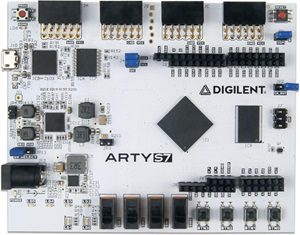
Equipped with dual-row Arduino connectors and Pmod ports, individuals can effortlessly augment their endeavors with compatible hardware shields, ensuring optimized design processes.
Specifications:
- Xilinx Spartan-7 FPGA variants
- Internal clock speeds exceeding 450MHz
- On-chip XADC for analog applications
- Programmable over JTAG and Quad-SPI Flash
- Powered from USB or any 7V-15V source
- Dual-row Arduino connectors
- Pmod ports for expansion
Pros:
- High-quality development board
- Extensive I/O and expansion options.
- Compatibility with Vivado Design Suite.
- Good documentation and ease of use.
Cons:
- Requires corporate signup for large tool downloads.
5. RHS Artix-7 FPGA Development Board
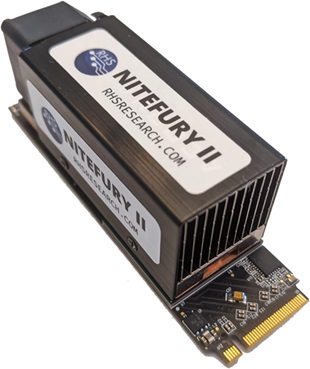
The RHS Artix-7 FPGA Development Board presents an advanced option for FPGA enthusiasts, showcasing the Xilinx Artix-7 FPGA and embracing the M.2 form factor. Powered by the Xilinx XC7A200T-2FBG484E FPGA, this board demonstrates proficiency across diverse applications, utilizing 1GB DDR3-800 memory and a 256Mb configuration flash.
Offering PCIe x4 gen 2 compatibility and an M.2 2280 Key M interface akin to NVMe SSDs, the board ensures flexible connectivity for high-performance endeavors.
Specifications:
- Xilinx XC7A200T-2FBG484E Artix-7 FPGA
- 1GB DDR3-800 memory
- 256Mb configuration flash
- PCIe x4 gen 2 compatibility
- M.2 2280 Key M interface
- Cooling fan built-in
- Bluetooth-enabled wireless communication
Pros:
- M.2 form factor for compact designs.
- PCIe x4 gen 2 and Bluetooth support.
- Cooling fan for optimal performance.
- Suitable for a wide range of applications.
Cons:
- Requires additional effort for PCIe communication.
6. Youyeetoo FPGA Development Board
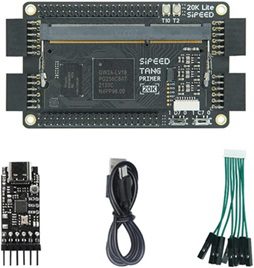
The Youyeetoo FPGA Development Board utilizes the GW2A-LV18PG256C8I7 chip, delivering robust DSP performance, a rapid LVDS interface, and BSRAM memory. The primary board, furnished with DDR3 memory components and power ICs, expedites the development and validation of high-speed, cost-effective projects.
With the Lite ext-board, users gain expanded functionality through abundant I/Os via pin headers and PMOD interfaces, streamlining the integration of peripheral modules for secondary development. Additionally, the Dock ext-board enhances the board’s capabilities with features such as USB-JTAG, Ethernet PHY, HDMI output, and more.
Specifications:
- GW2A-LV18PG256C8I7 chip
- DDR3 memory particles
- High-performance DSP
- BSRAM memory
- Lite ext-board with pin headers and PMOD interfaces
- Dock ext-board with USB-JTAG, Ethernet PHY, HDMI, and more
Pros:
- Rich internal resources for diverse projects.
- DDR3 memory for quick development.
- Two extension boards for versatile expansion.
Cons:
- Limited availability of VHDL examples.
Buying Guide for the Best FPGA Development Boards for Beginners
FPGA development boards hold significant importance in digital design, prototyping, and embedded system development. They provide flexibility, scalability, and performance, serving as crucial instruments for engineers, enthusiasts, and learners. Choosing the optimal FPGA development board involves considering various important factors. Here’s a detailed purchasing guide to assist you in making a well-informed choice:
1. FPGA Used
The choice of an FPGA chip is fundamental to the capabilities and performance of the development board. Different FPGAs offer varying levels of logic elements, memory resources, and processing power. It’s essential to consider factors such as logic density, speed grade, and integrated features like DSP blocks and memory blocks. Understanding your project requirements and selecting an FPGA that aligns with your design goals is crucial.
2. Installed Memory
Memory resources are critical for FPGA-based applications, enabling data storage, processing, and communication. When evaluating development boards, consider the type, capacity, and speed of installed memory components. DDR3 or DDR4 SDRAMs are common choices for high-speed data storage, while flash memory provides non-volatile storage for configuration files and data storage. Assess your project’s memory requirements and ensure the development board offers sufficient memory resources to accommodate your application needs.
3. I/O Devices
Input/output (I/O) devices facilitate communication between the FPGA and external peripherals, sensors, and interfaces. Evaluate the range and type of I/O devices available on the development board, including GPIO pins, analog-to-digital converters (ADCs), digital-to-analog converters (DACs), UART ports, Ethernet interfaces, and USB ports. Adequate I/O capabilities enable seamless integration with external components and support diverse application scenarios.
4. Ports
Ports are essential interfaces for connecting the FPGA development board to external devices, displays, and networks. Assess the availability and type of ports offered by the development board, including HDMI, VGA, DisplayPort, Ethernet, USB, and expansion ports like PMOD and Arduino headers. Consider the compatibility and versatility of ports based on your project requirements, ensuring seamless connectivity and interoperability with peripheral devices and systems.
FPGA Development Board – FAQs
Ans: Even though an FPGA development board may seem like a microcontroller like Arduino or Raspberry Pi, it is quite different. FPGA development boards for beginners use a large number of logic cells, interconnects, gates, and more that can be programmed to your requirements using an HDL language which is not possible with microcontrollers.
Ans: While there is no limit on the number of times you can reconfigure an FPGA development board for beginners, they do have a limit on the number of times you can write to its flash memory. Generally, you can write to its flash memory 10000 to 100000 times which should be plenty for most.
Ans: If you want to configure or use your FPGA development board for beginners, you will need to use some sort of programming language. And in most cases, this programming language is going to be either Verilog or VHDL which should be highly versatile for most especially if you are a beginner.
Conclusion
In conclusion, the best FPGA development boards offer a diverse range of options catering to various preferences and project requirements. Each board excels in different aspects, from cost-effectiveness to high-performance features.
Here are top three Recommendations:
- If you prefer a cost-effective solution with a focus on ease of use, the Terasic DE10-Lite FPGA Board stands out. Its Altera MAX 10 FPGA, compact size, and extensive features make it an excellent choice for prototyping and learning applications.
- For those seeking affordability combined with cutting-edge Xilinx 7 series technology, the Digilent Arty A7 FPGA Board is a strong contender. Its unbeatable price, compatibility with Vivado Design Suite, and versatile I/O options make it a popular choice among makers and hobbyists.
- If your interest lies in entry-level FPGA experimentation and RISC-V development, the MiiEIAOD Tang Nano 9K FPGA Development Board offers rich internal resources and multiple display interfaces.
Related Posts:
- ESP32 Pinout And ESP32 WROOM Pinouts
- Getting Started with ESP32 | Introduction to ESP32
- Introduction to FPGA | Structure, Components, Applications
- Raspberry Pi 4 Pinout | Raspberry Pi GPIO Pins for…
- What are the Differences Between Raspberry Pi and Arduino?
- Which Functions Does a Motherboard's Chipset Perform?

